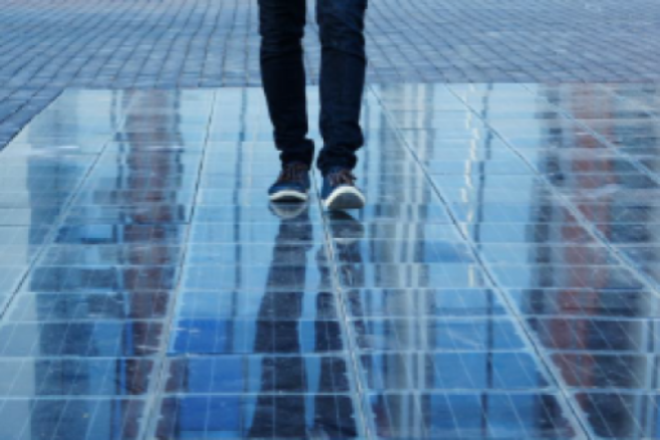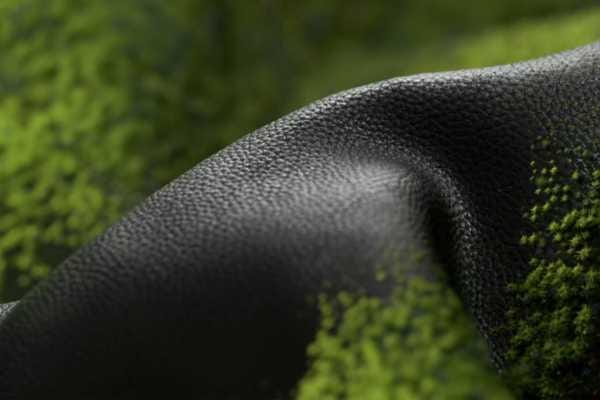Footpaths of the future
Busy walkways are ripe for a sustainability makeover. We take a look at some of those paving the way.

Clean tech startups are reimagining our pavements and pathways.
The world’s busiest walkways are ripe for a carbon footprint makeover. We’ve stepped into the city of the future to explore some of the budding innovations that are paving the way.
The type of tech emerging from the labs paints a picture of aesthetic, space-saving and sustainable urban spaces with inbuilt green energy sources to power outdoor devices such as displays, EV charging stations and lighting.
These smart cities and towns of the future promise more powerful experiences for pedestrians, and equally powerful data collection opportunities for businesses. Here are three early movers in the space to give us a feel for what may be in store.
SOLAR POWERED TILES
Why must solar cells be limited to rooftops? That is the question that Budapest-based tech company Platio has sought to address with its solar pavement products.
Its solar tiles, pictured above, are designed to be walked over, and can already be found on pavements, rooftop gardens and in parks, businesses and marinas in several countries.
While the tiles are not designed to replace traditional rooftop solar panels, they do have benefits. They are space-saving, as the solar becomes part of the built environment, and they are also well-positioned to produce energy for public buildings and street devices such as mobile chargers, EV chargers or streetlights.
Platio’s solar tiles are mounted on plastic paving slabs made from recycled materials including plastic and glass. Safety features include low-voltage operation and the tiles are coated with the most anti-skid surface on the market.
Platio tiles are currently powering pavements in Hungary, Germany, Spain, UK, USA and Canada.
FOOTSTEP POWER
UK startup Pavegen makes pavers that convert footsteps into energy to power off-grid applications such as games, lighting, and environmental monitoring.
The flooring technology harvests kinetic energy from people’s footsteps and converts it into electricity through electromagnetic induction.
As an added bonus, the tech can register the footsteps of individuals via apps, and using analytics can create powerful real-time insights into the behaviours of people interacting with its systems. It calls this the ‘internet of beings’.
Laurence Kemball-Cook, CEO of Pavegen, says of the technology: “We believe in placing people at the heart of the smart city.”
The company has already collaborated with a number of well-known brands and organisations including Adidas, Coca-Cola, Heathrow Airport, Shell and Westfield, Transport for London and Google, and Pavegen has rolled out 200 projects – both permanent and experiential – in 30 countries.
One recent project saw Pavegen build two large energy harvesting walkways in Romania that aim to turn office space into an environmentally-friendly and high-tech hub for workers, with over 30,000 footsteps being collected per day to power local LED lighting and a live data feed.
PLASTIC PATHWAYS
Bike paths made entirely from recycled plastic could also soon be popping up around the world. These are made from reclaimed plastic which is turned into prefabricated road components that are then transported to the project site and connected together Lego-style to form a road.
The PlasticRoad concept was instigated in 2015 by Dutch road construction company KWS, a subsidiary of Royal VolkerWessels, and has been pilot tested in two Dutch towns, Zwolle and Giethoorn (see video below) for the past two years.
PlasticRoad is now a standalone entity with sponsorship from KWS and plastic plumbing and draining manufacturer Wavin. The company says it solves two of the world’s biggest problems at once – reducing plastic pollution and the carbon emissions usually associated with this sort of building project.
The prefabricated road is hollow to prevent flooding and rainwater is channeled out to drain underneath the road surface. The space inside the road might one day also be used for other applications such as traffic monitoring, according to PlasticRoad.
The plastic path has other advantages, according to his maker. It’s four times lighter, it lasts longer, it’s up to 70% faster to build than conventional paths, and it produces significantly fewer C02 emissions.
That’s because PlasticRoad requires no heavy foundations, concrete slabs, layers of asphalt or drainage systems. It can also better withstand very low and high temperatures than its conventional counterparts, its makers say, and the road can be recycled up to seven times.
PlasticRoad says thanks to feedback from its Dutch trials, its prefabricated road blocks are now ready for commercial rollout and for larger projects such as cycle paths, residential streets, parking lots, schoolyards, and train platforms.





